Biostar TZ77XE4 Review: Dichotomy by Default
by Ian Cutress on July 21, 2012 5:00 AM EST- Posted in
- Motherboards
- Biostar
- Z77
A good way to start testing a new Z77 board is to strap in my review kit of memory and apply the XMP profile. The kit I use for Z77 is a G.Skill DDR3-2400 9-11-11 16GB kit, one of the first 4x4GB DDR3-2400 kits originally designed for the X79 platform. It seems that this kit had a short life as the chips used were quickly modified and branded in other products – I get this impression as there seem to be only a couple of motherboard manufacturers that can get them to work properly at purely XMP.
For all other manufacturers, I often have to adjust the memory voltage to beyond 1.65 volts (typically 1.72 volts) and the VTT voltage to 1.3 volts, 200 mV above normal. This so far has worked in all testing, albeit even with a hint of instability. However, if a motherboard does make this kit work first time, more often than not, the motherboard performs well during testing and the product shows an extra level of finesse across the package.
So when the Biostar TZ77XE4 landed on my desk, it first failed to run XMP, and then failed with the modified voltage settings. I was a little downhearted. The Biostar TZ77XE4 is rated only to “DDR3-2400+”, in comparison to most Z77 motherboards that are rated to 2666 or 2800. I have seen reviews of the board where the DDR3-2400 on a more recent kit work successfully. DDR3-2400 with 9-11-11 timings is actually very aggressive for old memory chips, and in the end, the motherboard and I came to a compromise with DDR3-2000 11-11-11 timings on the adjusted voltages, as anything faster than that caused severe memory instability.
I double-checked the XMP issue with another kit I have from Patriot, a DDR3-2133 9-11-9 kit. Unfortunately, that did not work either. I approached Biostar regarding this issue, to which I achieved a very swift response:
"The issue you see does exist and we fixed that by hardware modify which was released right after the first production [that were sent to initial reviewers rather than users]; that means you received the older version and most of the boards out there are the new ones."
For the review it means that during our testing, we had to run most of the tests at DDR3-2000. This should give this motherboard a handicap, and it is true in our 3DPM test. But the board did manage to score some top places, resulting in a very distinct dichotomous nature in how to interpret the results.
Biostar TZ77XE4 BIOS
This is only our second Biostar board reviewed in 18 months here at AnandTech, so interpreting the BIOS is top of our list of understanding the motherboard. Unfortunately, a few default settings could be considered irregular if you have ever played with other Z77 boards.
First of all is the SATA settings - it is common place on Z77 to have these set at AHCI as standard, in order to take advantage of such a setting especially in the landscape of SSDs we now live in. Unfortunately, Biostar still resort to enabling IDE by default on the TZ77XE4, which may attribute to some less-than-spectacular SATA port results in other motherboard reviews. For our testing, we have enabled AHCI, and Biostar are now aware of this issue.
For overclocking, I typically input values using the keypad. This works most of the time, because NumLock is enabled by default on every motherboard I have reviewed. Unfortunately, it was not enabled on the TZ77XE4 - talking to Biostar, this should be enabled in future BIOS releases.
BIOS updating is becoming a prerequisite feature on motherboards, especially if users can do it outside of the operating system. If updating is OS only, a user needs to install the OS first, and then update the BIOS that in itself could cause issues. Most (~80%) motherboard manufacturers include a tool in the BIOS to do this, and some even go further to provide the facility without a CPU, memory or VGA card installed. In order to activate it on the TZ77XE4, users must press F12 at boot-time, but the POST screen will not tell you this, and there is no option in the BIOS. I found it accidentally when looking from the 'select a boot device' option on POST.
As for the BIOS, it is visually very welcoming:
The front screen has some of the details I like to see - motherboard name, BIOS version, memory amount and memory speed; unfortunately, we do not have other important information, such as current CPU installed, speed of the CPU, CPU temperature, voltages and fan speeds. I prefer having all this information to hand the minute I get into the BIOS in case something is amiss, or if diagnosing issues.
In order to enable AHCI mode, users should navigate to Advanced -> SATA Configuration, where the following screen will be presented:
By default, the SATA Mode selection and ASMedia controller are in IDE mode - switch this to AHCI mode for improved performance of most SATA hard drives.
Fan controls on the Biostar TZ77XE4 are both in the BIOS and in the operating system software and both are built on the same principle:
Users in the BIOS can select whether to give the CPU fan header one of the predefined settings, or let the BIOS 'calibrate' the fan. This means slowing it down and spinning it up, then suggesting appropriate values for the Biostar options. Note other motherboard manufacturers directly deal with CPU temperatures and correlate the fan speeds so that users do not have to learn arbitrary scales. No such luck here I am afraid.
All the overclocking, memory and voltage options are under the O.N.E menu. In this menu, the first option allows us to select which screen we would like to see first when entering the BIOS. Not many other motherboards have this feature - it would be interesting to see it on some of the top tier products in the future.
Overclocking options allow users to define CPU ratios depending on load, or have a fixed CPU ratio throughout. Memory selection is somewhat frustrating on the TZ77XE4 - on many other motherboards on the market users can configure certain memory settings and leave the rest on automatic. On this product, if a user wants to change any sub-timing, they must know all the equivalent subtimings as well.
Some elements of this BIOS feel like they are ripped straight out of the Sandy Bridge models. Take voltage selection for example - should a user select 'CPU VCore Fixed' in order to manually adjust the voltage, the first value it gives is 1.250 volts - a voltage that is too high for most Ivy Bridge usage scenarios. At this voltage, and around 4.7 GHz, users will see temperatures nudging 100ºC easily. Simple things like this should be caught before release, or adjusted depending on CPU detected.


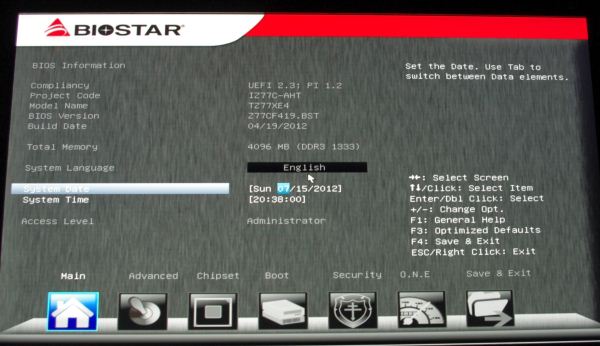
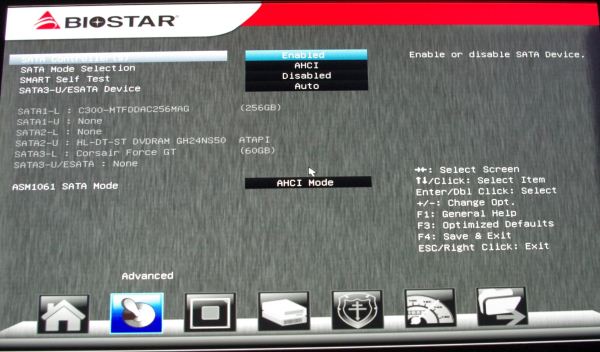
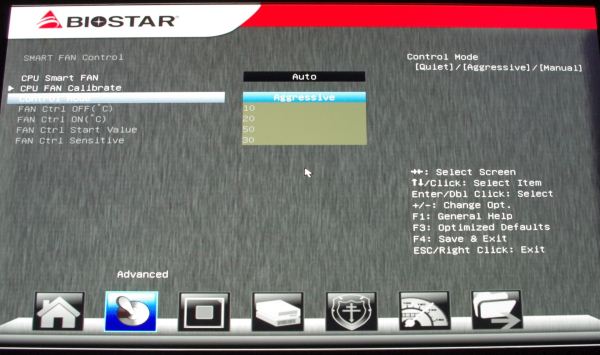
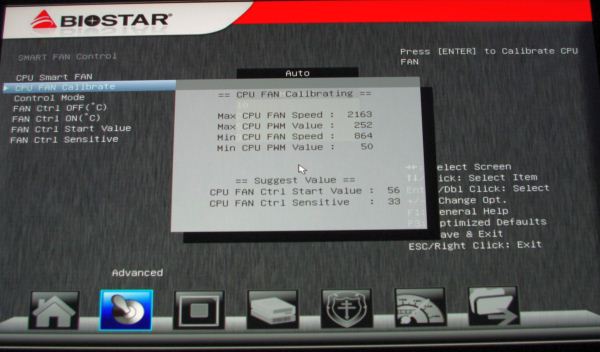
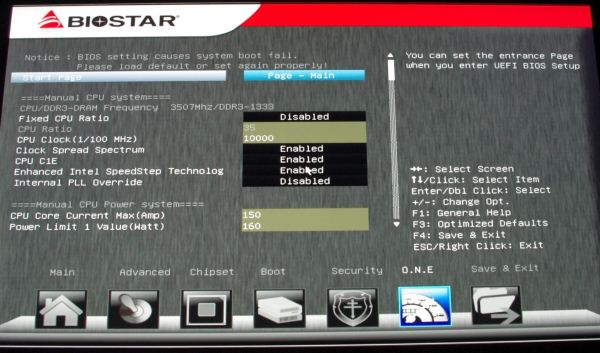
















28 Comments
View All Comments
Epicac - Saturday, July 21, 2012 - link
I've heard horror stories from Biostar and ECS Motherboard owners. Even a cheap board from either of these manufacturers wouldn't tempt me.StevoLincolnite - Saturday, July 21, 2012 - link
Peace of mind goes a long way!Snotling - Saturday, July 21, 2012 - link
I deal toasted PC components every week... motherboards, videocards, DVD players, hard drives. As far as I know they (Biostar) are no worse than Asus or any other actually. for the exception of one biostar Mobo that was DOA I can't remember seeing one that was defective.They are great for repairs because you can usually get that 4 year old Biostar Mobo "new" at retailers when all other makers are only available used.
Olaf van der Spek - Saturday, July 21, 2012 - link
I've heard horror stories from Asus and Gigabyte owners.....yyrkoon - Sunday, July 22, 2012 - link
So basically, you're posting only to spread F U D ? I've heard lots of things. That I do not repeat because I have no personal experiences. But along those lines. I suppose any idiot who hasn't a clue how to build a system can relate many horror stories. Hell, when I first started building my own systems back in the early 90's. I completely destroyed a brand new hard disk. By low level formatting the drive from the BIOS.Not only that. When ABIT was still in the motherboard business. I had read many "stories" of how people had such a hard time with their boards. Yet . . . I've been a long time ABIT motherboard "fan". Why ? I always knew what to expect from their products, and they were always very stable .
@Snotling
Yes, I agree. Except my own personal experiences would leave me to believe that BIOSTAR > Asus. Like you. I received DOA parts. Except it was not just one. It was four in a row through two different dealers.
Then for personal parts. I will not even touch their budget brand sister company. The reason why is simple. Based on a review from this very same site. I went out and bought a system board for my budget PC. I experienced several problems. Some of which were correctable. Some which were fatal flaws. Such as the PC locking up after 2-5 days ( completely random ). Having spent two weeks on the phone and emailing tech support I called no joy, and started looking for another board. Then wouldn't ya know. when replaced with an ABIT board ( that even cost less ). All the problems went away. That was 6-7 year ago. The system still runs rock solid to this day.
The last system I built for myself was based on an ABIT IP35-E motherboard. This system is also running to this day. Zero crashes, unless I was doing something I should not have been doing. Such as pushing an overclock too far . . .
So yeah I am a bit biased when it comes to name brands. I would never touch asrock, unless a customer insisted. I do not use Asus motherboards in any of my own systems, and strongly recommend against customers using them( if asked ). However. My own personal laptop is branded Asus . . . and I love it. Go figure lol.
AVP - Saturday, July 21, 2012 - link
I've had better luck with biostar than abit or asus.Wixman666 - Monday, July 23, 2012 - link
I've sold plenty of every type of board under the sun over the years and Biostar boards are no worse than any other as far as QC goes. ECS are the worst however, historically speaking, on their budget line at least.najames - Tuesday, July 24, 2012 - link
I built an ECS AMD socket 754 system, sent it to my brother years ago, and they are still using it today.The best motherboard I've ever owned since the mid 80s has been a little Biostar T series board with a dinky AMD dual core, happily overclocked if asked. I reluctantly sent it to my nephew when his system crapped out and he is still using it today AFAIK.
My current collection of Asus, Gigabyte, and Intel boards are no better/worse. They likely just have some better features.
ggathagan - Tuesday, July 24, 2012 - link
While most motherboard makers have had periods of bad QC, the chipset involved always has to figure into the mix, whether you look at stability or flakiness.Without factoring that into the equation, one bad experience with a big name brand is no more indicative that a rock-solid experience with a lesser-known brand.
The fact that everyone (chip designers, fab work, motherboard makers and end-users) is always pushing for more performance in shorter spans of time does no one any favors, but we all persist in that approach.
As such QC history can vary widely at any company.
johnsmith9875 - Saturday, August 11, 2012 - link
I tossed my flaky, cranky genuine intel board and bought a biostar and haven't looked back since.I think Biostar has improved significantly over the years, its no longer down there in PCChips territory.